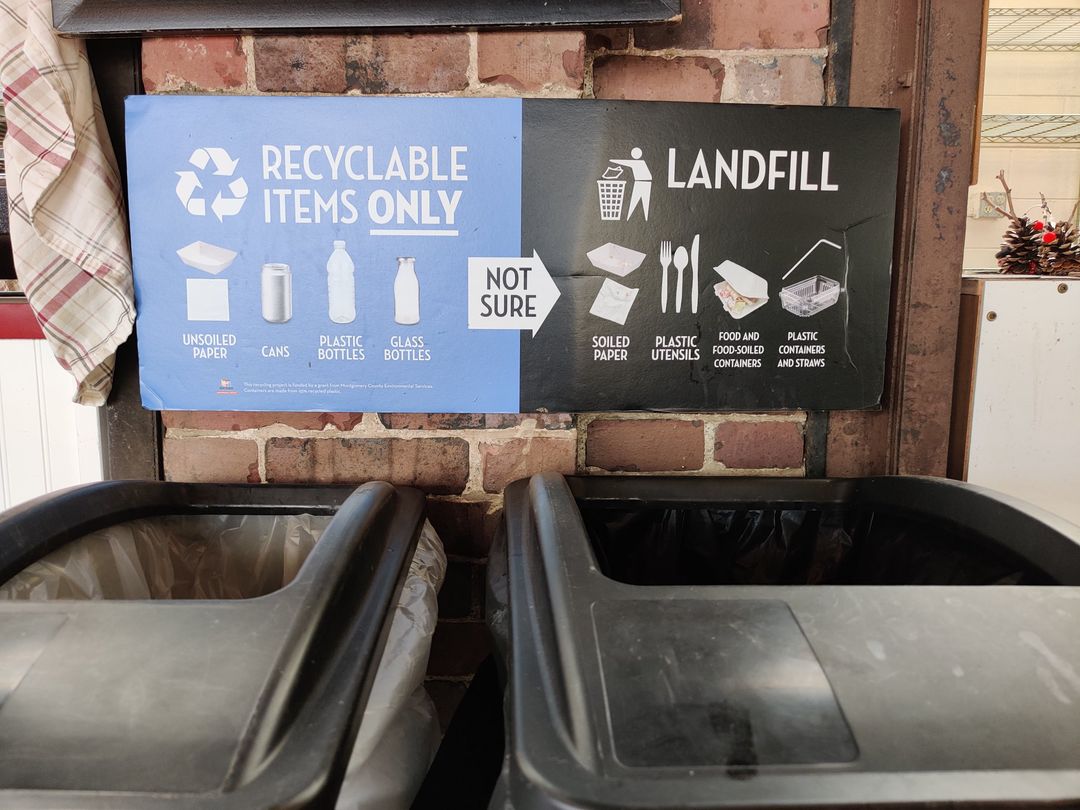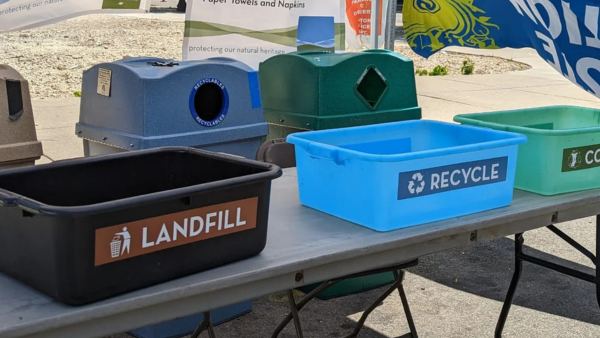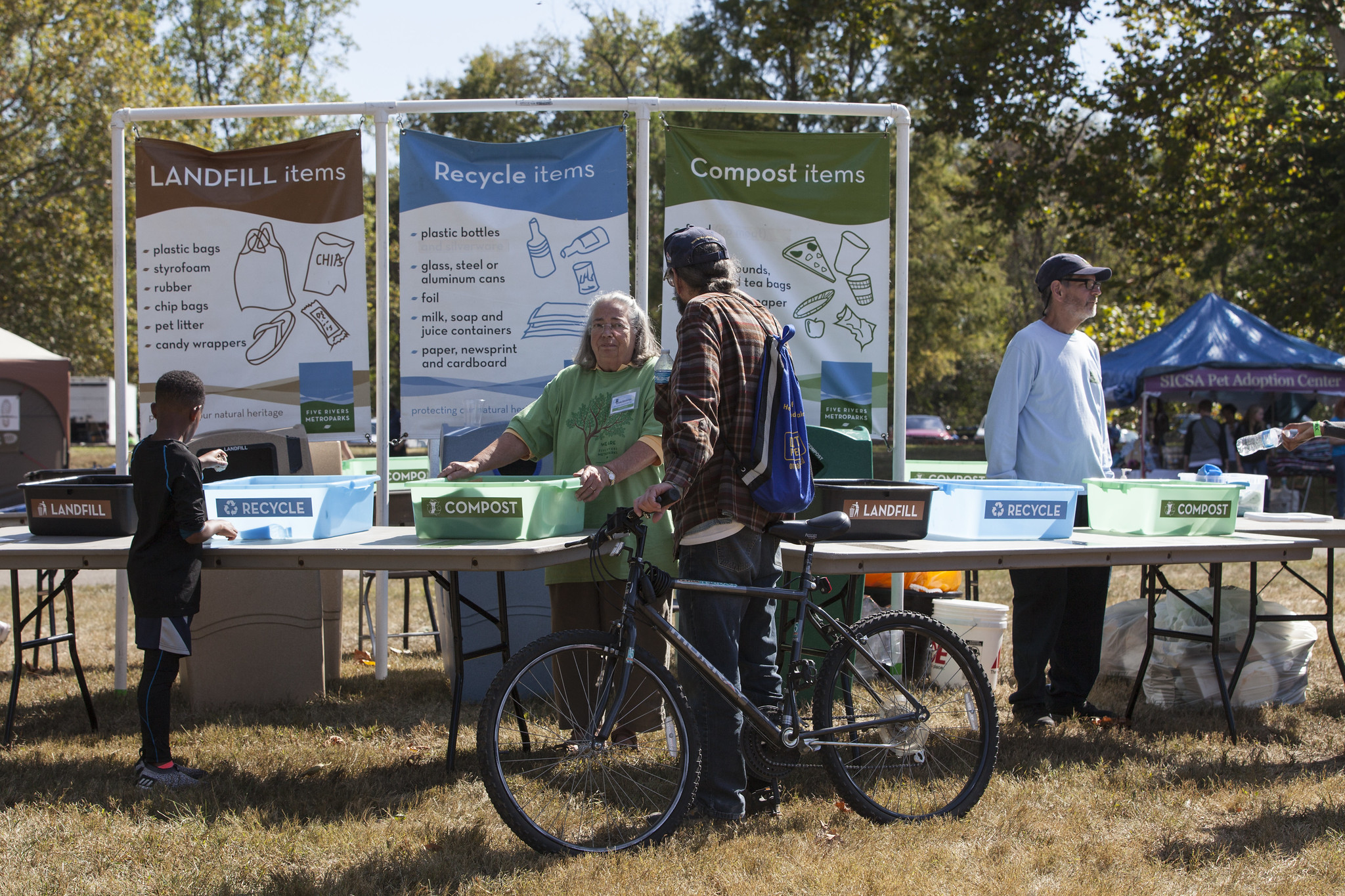Updated April 17th, 2023
9 green spring cleaning tips
Heads up! This article was last updated 1 year ago.
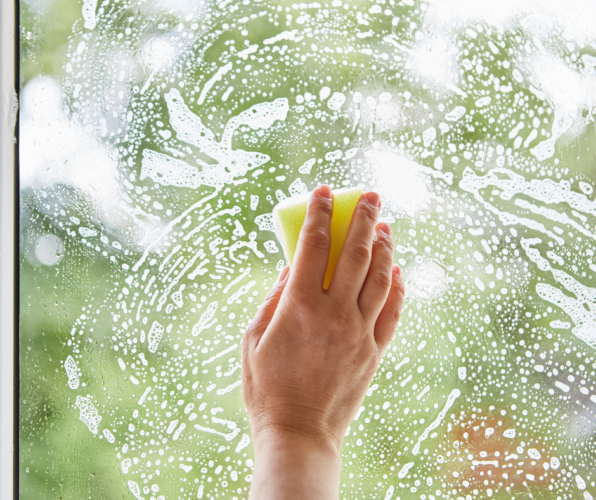
It’s officially spring cleaning season, and many may be itching to get their spaces cleaned, organized and purged of unnecessary items that have piled up during winter. You can create tidy, healthy living spaces and reduce your impact on the environment with just a little extra effort.
Before you start pitching unwanted items, remember there are many things in your household that could harm the environment if not disposed of properly. Additionally, many household items can be recycled, which helps keep waste out of the landfill.
“Waste directed to a landfill takes an extremely long time to decompose, and even compostable waste does not break down quickly in a low-oxygen, high-pressure environment,” said Tim Pritchard, Five Rivers MetroParks sustainability coordinator. “Methane, a greenhouse gas with an unpleasant odor, is released during anaerobic decomposition that takes place in the landfill.”
HAZARDS AT HOME
Before you start spring cleaning, it’s important to understand which items in your household are considered hazardous. Not only does the average home generate 20 pounds of hazardous household waste each year, as much as 100 pounds can accumulate in the home during an extended period of time, according to the Environmental Protection Agency. Items such as batteries, paint, propane tanks, fire extinguishers and vehicle fluids can all be considered hazardous and need to be discarded appropriately.
“Chemicals and other hazardous household waste has the potential to injure waste-handlers or alter the chemistry of the natural environment if not disposed of properly,” said Pritchard. “This can have a direct impact on wildlife and human health.”
Hazardous waste materials should be taken to the Montgomery County Solid Waste District (MCSWD)’s household hazardous waste disposal program at the South Transfer Station, every Tuesday and Saturday from 8 a.m. to 2 p.m. This program is free for Montgomery County residents and ensures that materials which are potentially harmful to the local environment are disposed of responsibly.
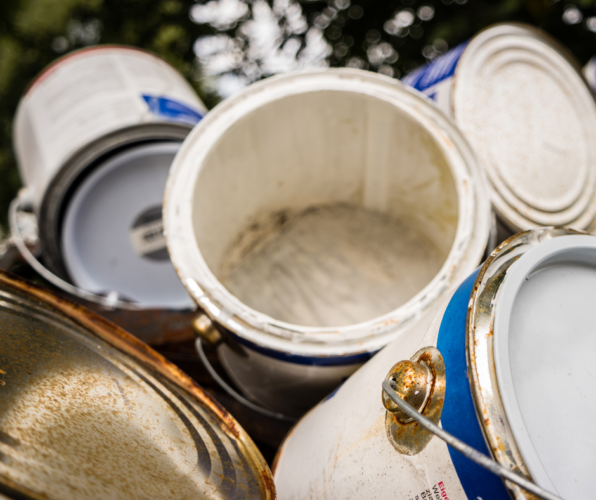
STAY AWAY FROM THE SINK
Pouring old household cleaners, paint and expired medicine down the sink may be easy, but it can have serious consequences for water ecosystems, Mother Nature Network reports. Additionally, medications, such as illicit drugs and over-the-counter medicine, are not addressed during water treatment. Dilute traces of these compounds may end up in drinking water.
Liquid-waste materials, such as paint and household chemicals, can also be dropped off at the MCSWD’s Household Hazardous Waste Disposal program, while expired medications can be dropped off at local police stations. Visit www.rxdrugdopbox.org to find a drop-off location near you.
PANTRY PURGE
U.S. News reports the average American throws away about 25% of food and beverage purchases, equating to a potential annual monetary loss of up to $2,275 for a family of four. If you have expired food in your pantry, consider recycling its packaging before you throw out old food items. Glass, metal and paper food and beverage containers can be recycled. Plastic bottles, jars, tubs and cups are all recycleable in Montgomery County.
Be sure to bring old plastic shopping bags and other polypropylene products, such as bread bags, cereal box liners and plastic food pouches, with you on your next trip to the store, as these items can be recycled at many department, home improvement and grocery store locations.
UPCYCLE AND RECYCLE
If you plan on using your tax return to upgrade the furniture or appliances in your home this spring, consider donating or selling your old items that are in working condition. Non-functioning appliances can be taken to a scrap recycling facility or dropped off at the Montgomery County Appliance Recycling program at no charge, twice a year. Fully-functioning appliances and furniture can be sold or donated to the Habitat for Humanity ReStore, Goodwill, St. Vincent de Paul and elsewhere.
For smaller household items, consider a post-spring cleaning garage sale or donate unwanted housewares. Crayons 2 Classrooms, a Dayton-based nonprofit that provides materials to students and teachers, also accepts slightly used school and office supplies.
GO GREEN
Once unwanted items are removed from your home, opt to scrub down your space with cleaning products that are biodegradable and non-toxic. Beware of products that are labelled “green” that aren’t ECOLOGO or Green Seal certified.
“Cleaning products impact the natural environment, indoor air quality and personal health of those using them,” said Pritchard. “Green-certified cleaning products get the job done and are better for your house and the environment.”
Most cleaning and sanitizing can be done with biodegradable, non-toxic agents. This helps maintain indoor air quality and protect regional aquatic ecosystems. There are many options at most supermarkets for most cleaning tasks. However, to save money and perhaps an extra trip to the store, consider making your own with common household ingredients, such as distilled vinegar, baking soda, rubbing alcohol and lemon juice.
DITCH THE DISPOSABLES
Even though a washing machine uses water and energy, washable towels and rags use considerably less than disposables. It’s always a more earth-friendly option to use washable towels and rags to do cleanup rather than paper towels or disposable shop rags. It is much less expensive as well, even considering water and electric bills.
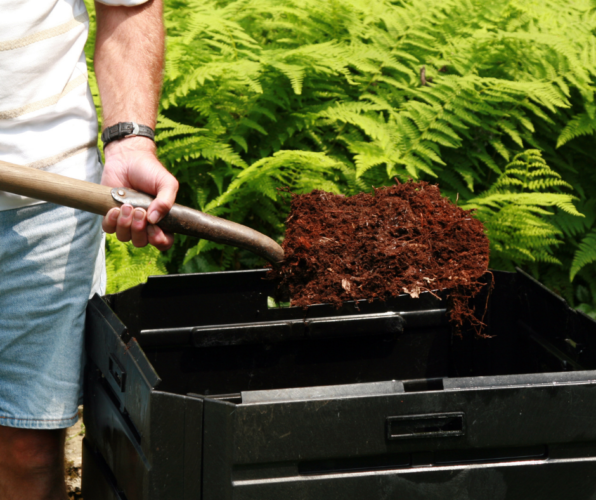
COMPOST THE CRUD
Almost any organic (carbon-based) materials can be composted. That means as you sweep out dust and other household debris, most of it can go in the compost bin. Dryer lint, hair, pet fur, sawdust, shredded paper, and crumbs are all examples of compostable items people might not think to keep out of the trash. Learn more about how to compost here.
HUMAN POWER FIRST
Big cleaning jobs can consume a lot of energy. Hours of running a vacuum or steam cleaner and running hot water add up. Often, it’s easier to push a broom or dry mop first and use a vacuum at the end of the job. Try cleaning without water first and only using hot water for tough jobs.
CLEAR THE AIR
Cleaning season can mean that a lot of trapped dust, mold and other allergens get stirred up and released from carpet, behind furniture and other hiding spots. Remodeling projects usually leave airborne irritants as well.
Make sure to vacuum registers and return vents, refrigerator coils, house fans, dehumidifier filters and any other locations where air is circulated. Doing so will help keep you and your family healthy and allow your household appliances to operate more efficiently, increasing their life cycle and saving money.
Additionally, try giving your air quality a boost by adding some greenery to your abode. Houseplants help to filter air and create a healthier living environment. Plants should be placed in a well-ventilated area to prevent growing leaf mold, and larger plants should be dusted once a month. For low-maintenance indoor greenery, consider philodendron, spider and snake plants.


